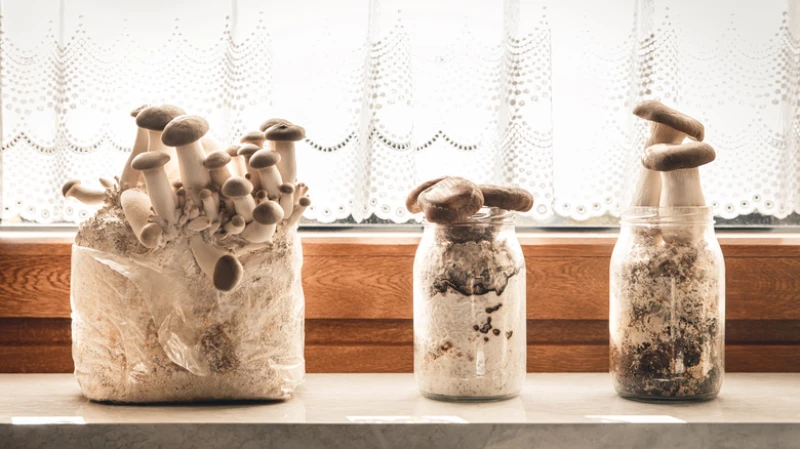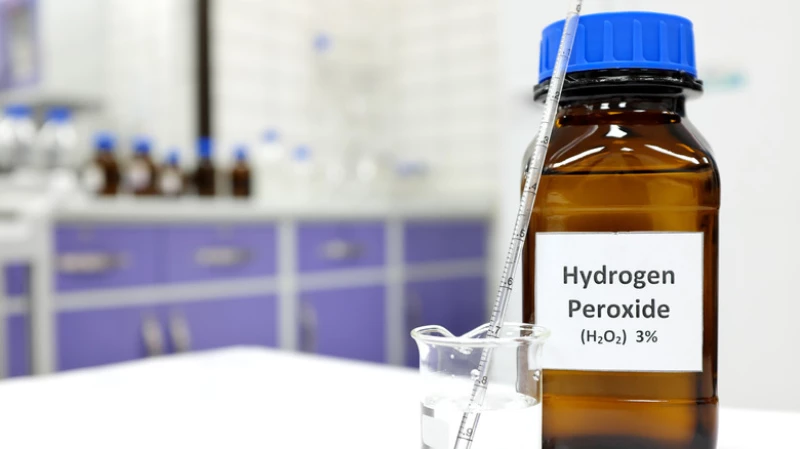Indoor gardening enthusiasts have a reason to celebrate as they witness the magical growth of oyster mushrooms or shiitakes in their own homes. It may seem unbelievable that such a natural process can be replicated in a clean kitchen environment, but with the right supplies and equipment, it is possible. One secret ingredient that aids in the growth of mushrooms at home is 3% hydrogen peroxide.
Hydrogen peroxide is a valuable tool for cultivating mushrooms. It has made it possible to grow mushrooms outside of a clean room. That's why there are many ready-to-grow home mushroom kits available on the market today, which often include hydrogen peroxide in their ingredients. It is used to sterilize the substrates on which mushrooms thrive. During the growing process, diluted hydrogen peroxide can be used to prevent minor surface contamination, and spraying the solution on harvested fungi can increase their shelf life. Interestingly, mushrooms, or more specifically, mycelium, naturally produce hydrogen peroxide as a defense against pathogens.
Mushroom Magic
While most microorganisms such as bacteria, viruses, and molds are killed by hydrogen peroxide, mushroom mycelium is resistant to its sterilizing properties. Mushroom mycelium needs to colonize a substrate, which in nature is a fallen branch or a damp patch of humus where a balanced ecosystem prevents disease. One common mistake when growing mushrooms at home is forgetting to sterilize or pasteurize the medium, such as wood chips, straw, or coffee grounds. Soaking the medium in hydrogen peroxide before inoculating it with mushroom spawn, or baby mycelium, is a legitimate and expert-approved method. Those who have experience with DIY mushroom growing kits may want to cultivate their own spawn, and hydrogen peroxide is effective in sterilizing the agar on which mushroom spores thrive.
Did you know that hydrogen peroxide (H2O2) can be used to keep mushrooms healthy? According to a study published in the Journal of Food Science, watering growing mushrooms with hydrogen peroxide mixed with calcium chloride can reduce bacterial populations by 87%. It can also help control early infestations of cobweb mold to black bread mold and extend the shelf life of mushrooms after harvest. However, it's important to note that H2O2 is unlikely to prevent mushroom-ruining bacterial blotch, it can be corrosive and may damage nearby equipment, and some experts consider it the most expensive substrate sterilization option.
Using H2O2
If you're interested in using hydrogen peroxide for your mushroom growing efforts, it's important to use the right concentrations. Typically, anywhere between 3% and 10% is considered safe. You can purchase a 1-gallon bottle of food-grade 3% hydrogen peroxide from Amazon for $17.99. Alternatively, if you don't need as much, Walmart offers a 32-fluid-ounce bottle of Equate 3% hydrogen peroxide for $1.06. Lab Alley also sells 1 gallon of lab-grade 3% hydrogen peroxide for $38.00 for a one-time purchase.
To ensure the safety and cleanliness of your substrate, there are two methods you can use: pasteurization or sterilization. For pasteurization, you will need to dilute your 3% H2O2 solution in water at a 1:10 ratio. Another option is to mix 34 fluid ounces of 3% H2O2 with 1 gallon of water. Soak the substrate in this solution for 12 to 24 hours, known as cool pasteurization. Afterward, drain the substrate using a sieve and immediately inoculate it with spawn. You can also use the 10:1 ratio solution to clean the containers that hold your substrate or to gently hydrate the substrate as your mushrooms grow. Additionally, it can be used to treat any mold that may appear. An added benefit for environmentally conscious growers is that H2O2 is eco-friendly, breaking down into water, carbon dioxide, and oxygen.









